Abstract
1. Recently it was suggested that submaximal cardiac output (Q) could vary in response to changes in arterial O2 concentration (Ca,O2), so that arterial O2 delivery (Qa,O2 = Q x Ca,O2, in ml min-1) is kept constant. 2. This hypothesis was tested on eight healthy male subjects, at rest and during exercise (50, 100 and 150 W) in three conditions: normaemia (N), after 6 weeks of endurance training (T), and 2 days after subsequent autologous blood reinfusion (P). 3. Measured variables were oxygen consumption (VO2), by open circuit method, Q, by a CO2 rebreathing method, and haemoglobin concentration ([Hb]), by a photometric method. Ca,O2 was calculated as the product of [Hb], arterial O2 saturation (0.97), and the O2 binding coefficient. 4. [Hb] and thus Ca,O2 increased by 2.6% (T vs. N) and subsequently by further 5.8% (P vs. T). VO2 and Qa,O2 were linear functions of power (w), both relationships being unaffected by changes in Ca,O2. As a consequence, the linear Q vs. VO2 relationships were shifted downward as Ca,O2 increased. 5. The VO2 vs. w and the Qa,O2 vs. w relationships had the same slope. Therefore, the difference between Qa,O2 (w) and VO2 (w), equal to O2 flow in mixed venous blood (Qv,O2), was constant. 6. In conclusion, the tested hypothesis was supported by the present results. The observed constancy of Qv,O2 suggested that Qv,O2 may play a key role in regulating the cardiovascular response to exercise.
Full text
PDF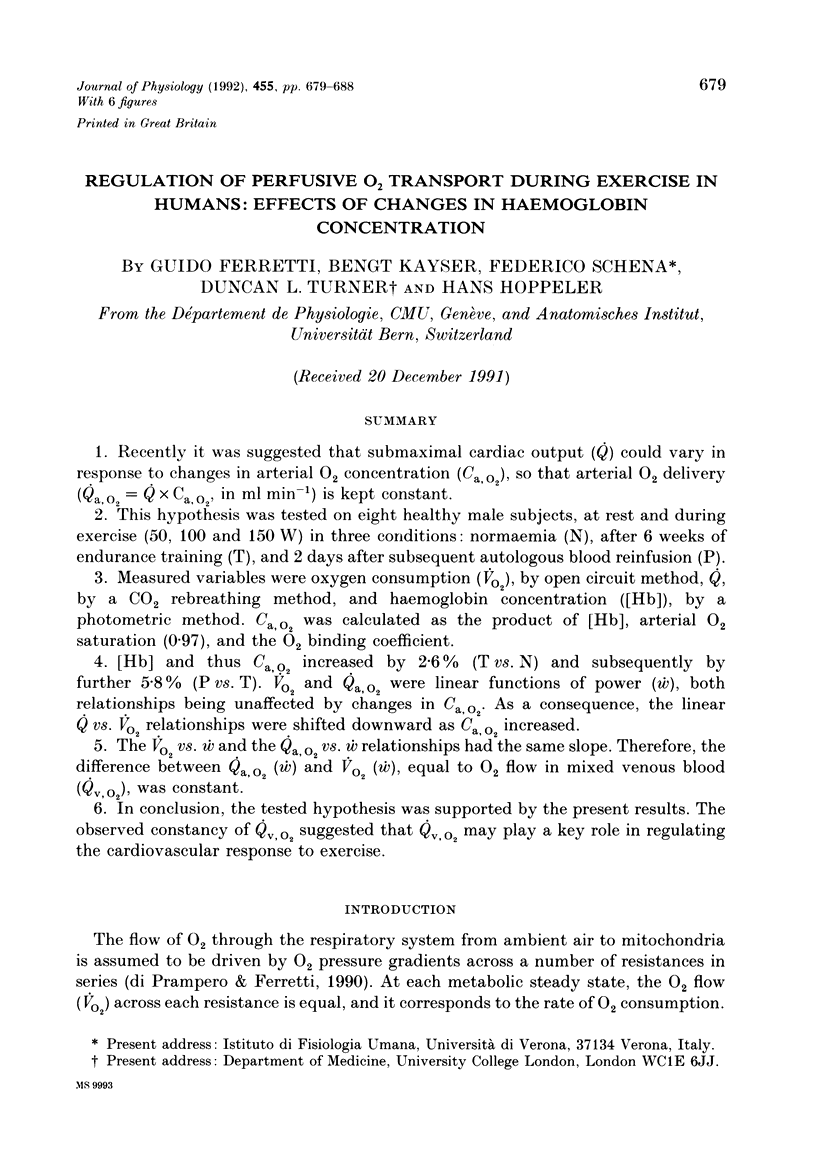
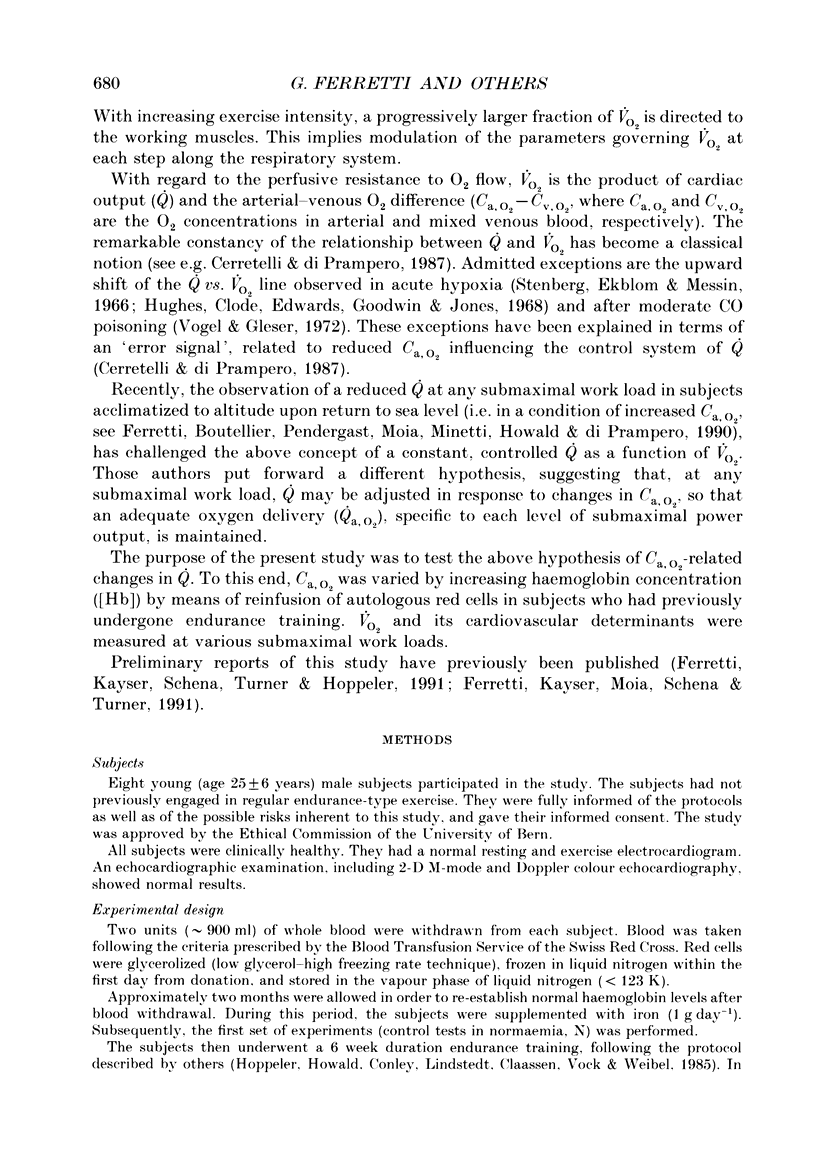
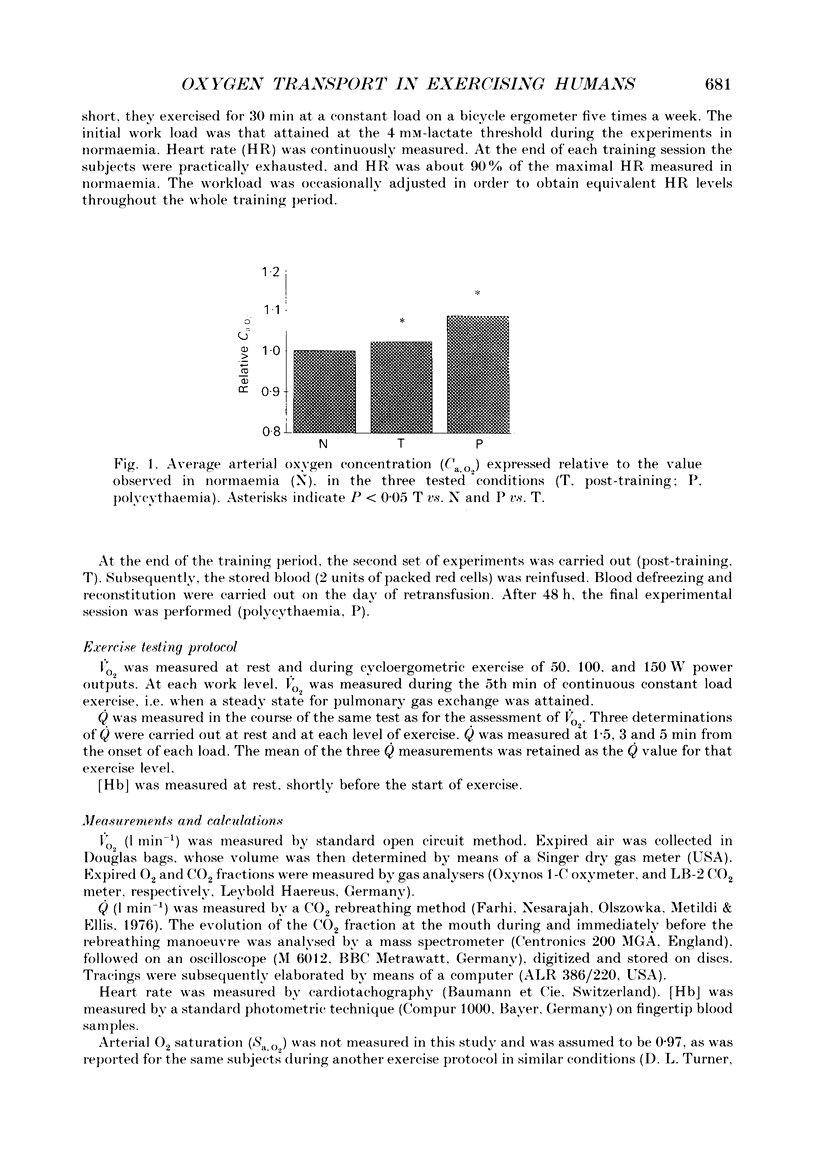

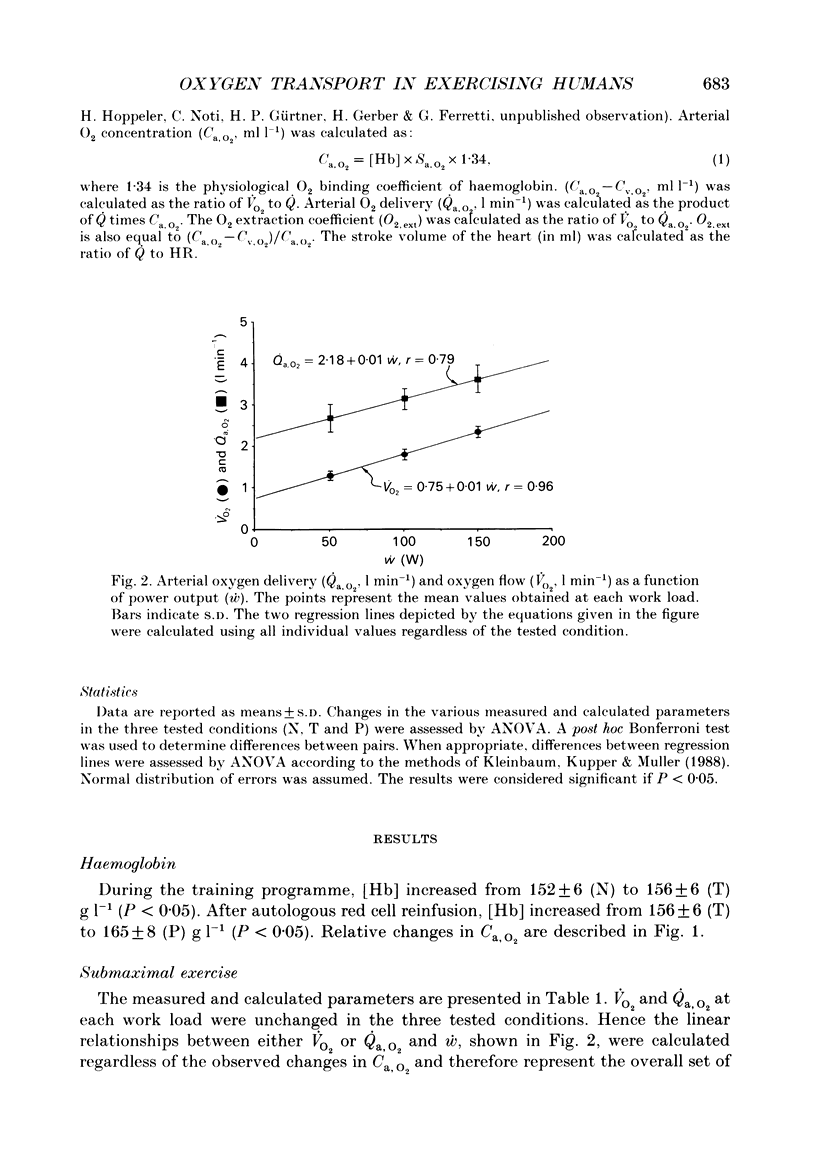

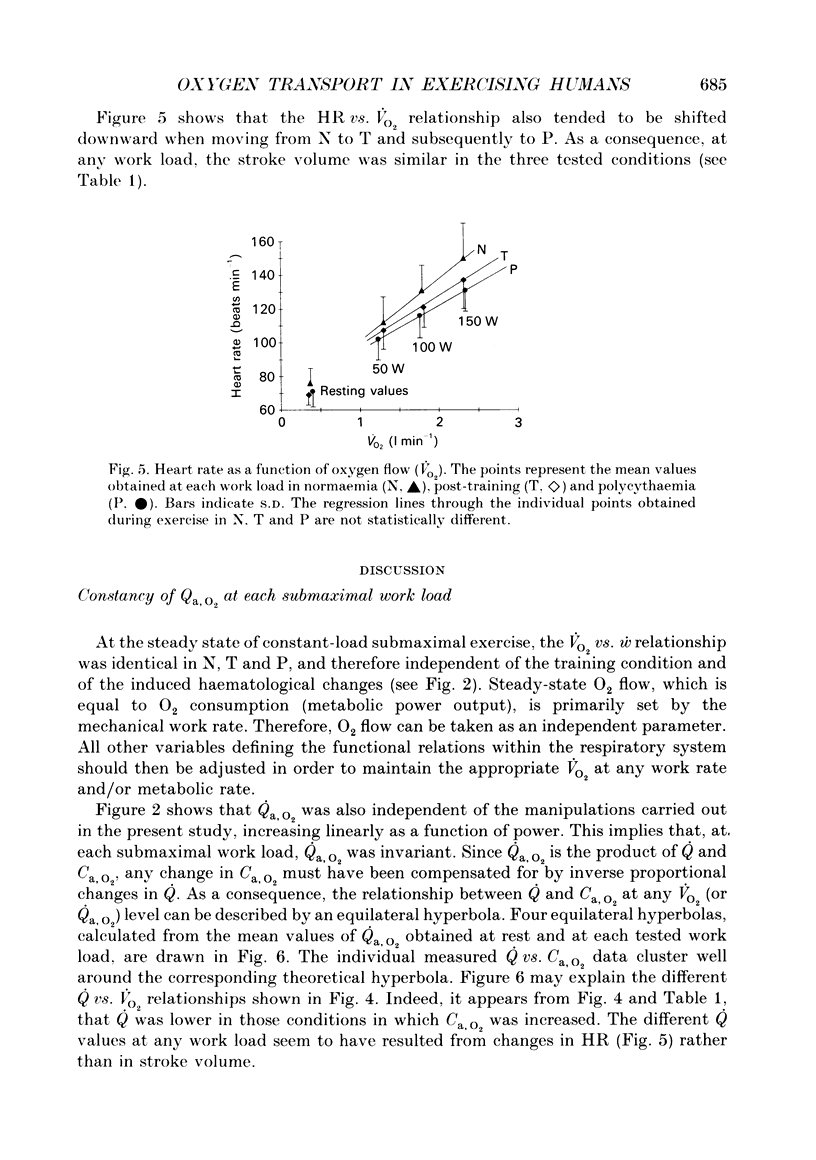
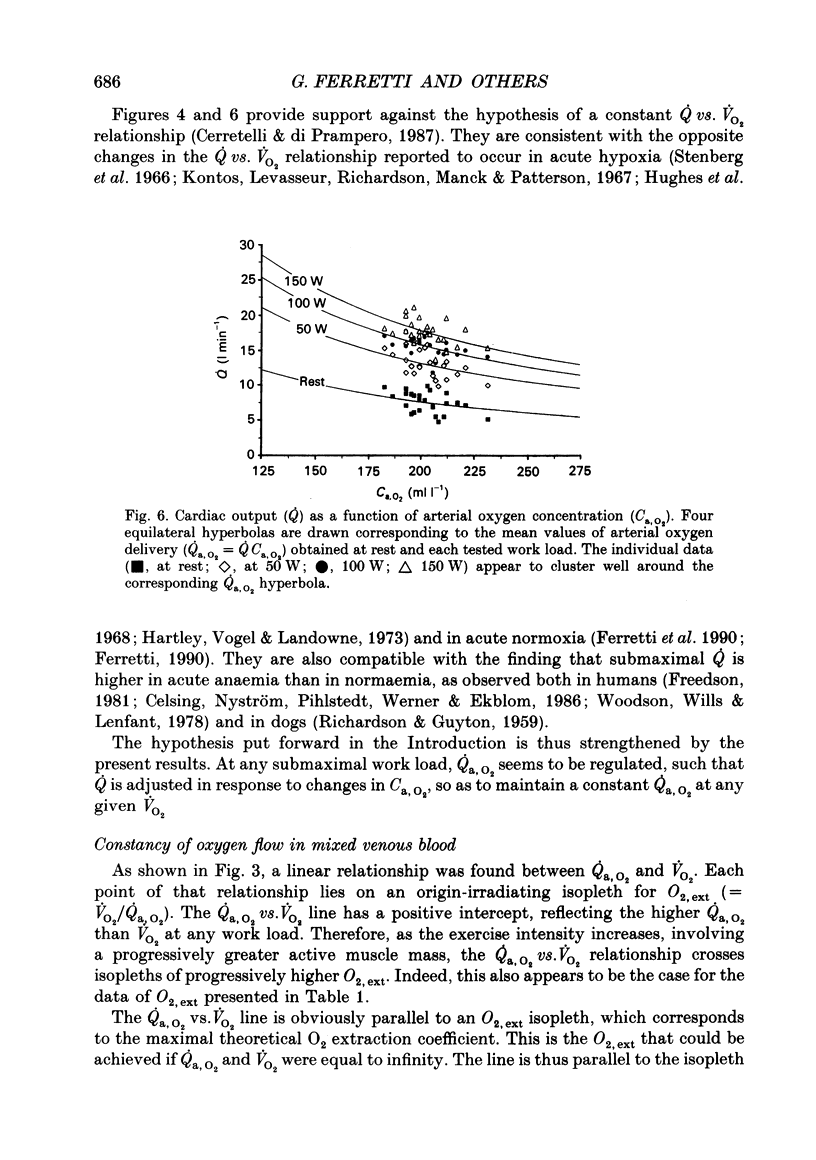

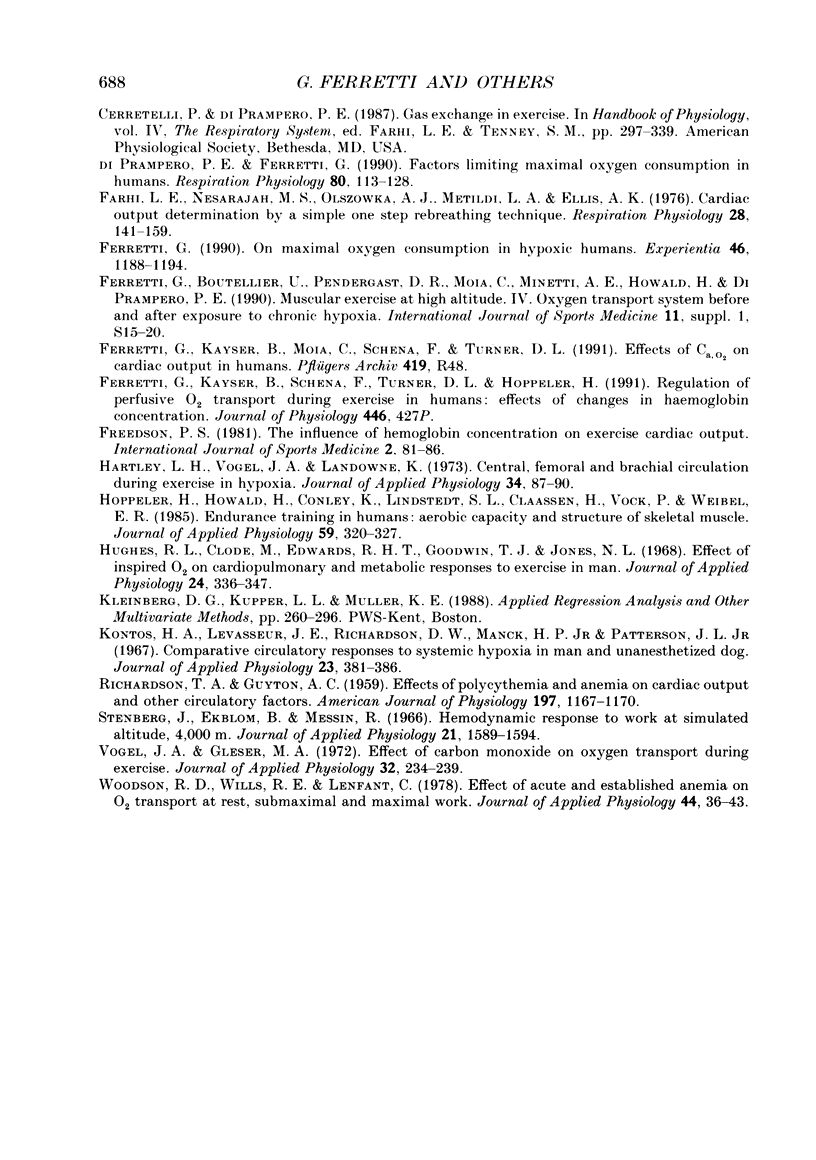
Selected References
These references are in PubMed. This may not be the complete list of references from this article.
- Celsing F., Nyström J., Pihlstedt P., Werner B., Ekblom B. Effect of long-term anemia and retransfusion on central circulation during exercise. J Appl Physiol (1985) 1986 Oct;61(4):1358–1362. doi: 10.1152/jappl.1986.61.4.1358. [DOI] [PubMed] [Google Scholar]
- Farhi L. E., Nesarajah M. S., Olszowka A. J., Metildi L. A., Ellis A. K. Cardiac output determination by simple one-step rebreathing technique. Respir Physiol. 1976 Oct;28(1):141–159. doi: 10.1016/0034-5687(76)90091-8. [DOI] [PubMed] [Google Scholar]
- Ferretti G. On maximal oxygen consumption in hypoxic humans. Experientia. 1990 Dec 1;46(11-12):1188–1194. doi: 10.1007/BF01936934. [DOI] [PubMed] [Google Scholar]
- Freedson P. S. The influence of hemoglobin concentration on exercise cardiac output. Int J Sports Med. 1981 May;2(2):81–86. doi: 10.1055/s-2008-1034587. [DOI] [PubMed] [Google Scholar]
- Hartley L. H., Vogel J. A., Landowne M. Central, femoral, and brachial circulation during exercise in hypoxia. J Appl Physiol. 1973 Jan;34(1):87–90. doi: 10.1152/jappl.1973.34.1.87. [DOI] [PubMed] [Google Scholar]
- Hoppeler H., Howald H., Conley K., Lindstedt S. L., Claassen H., Vock P., Weibel E. R. Endurance training in humans: aerobic capacity and structure of skeletal muscle. J Appl Physiol (1985) 1985 Aug;59(2):320–327. doi: 10.1152/jappl.1985.59.2.320. [DOI] [PubMed] [Google Scholar]
- Hughes R. L., Clode M., Edwards R. H., Goodwin T. J., Jones N. L. Effect of inspired O2 on cardiopulmonary and metabolic responses to exercise in man. J Appl Physiol. 1968 Mar;24(3):336–347. doi: 10.1152/jappl.1968.24.3.336. [DOI] [PubMed] [Google Scholar]
- Kontos H. A., Levasseur J. E., Richardson D. W., Mauck H. P., Jr, Patterson J. L., Jr Comparative circulatory responses to systemic hypoxia in man and in unanesthetized dog. J Appl Physiol. 1967 Sep;23(3):381–386. doi: 10.1152/jappl.1967.23.3.381. [DOI] [PubMed] [Google Scholar]
- Stenberg J., Ekblom B., Messin R. Hemodynamic response to work at simulated altitude, 4,000 m. J Appl Physiol. 1966 Sep;21(5):1589–1594. doi: 10.1152/jappl.1966.21.5.1589. [DOI] [PubMed] [Google Scholar]
- Vogel J. A., Gleser M. A. Effect of carbon monoxide on oxygen transport during exercise. J Appl Physiol. 1972 Feb;32(2):234–239. doi: 10.1152/jappl.1972.32.2.234. [DOI] [PubMed] [Google Scholar]
- Woodson R. D., Wills R. E., Lenfant C. Effect of acute and established anemia on O2 transport at rest, submaximal and maximal work. J Appl Physiol Respir Environ Exerc Physiol. 1978 Jan;44(1):36–43. doi: 10.1152/jappl.1978.44.1.36. [DOI] [PubMed] [Google Scholar]
- di Prampero P. E., Ferretti G. Factors limiting maximal oxygen consumption in humans. Respir Physiol. 1990 May-Jun;80(2-3):113–127. doi: 10.1016/0034-5687(90)90075-a. [DOI] [PubMed] [Google Scholar]


